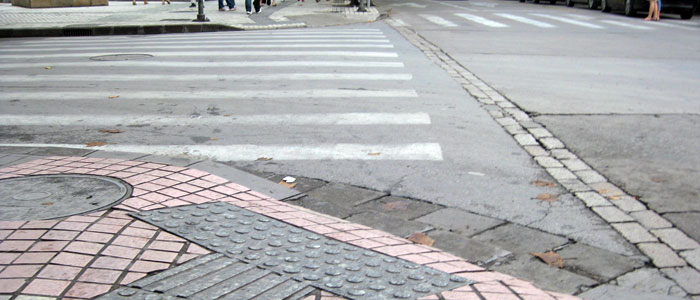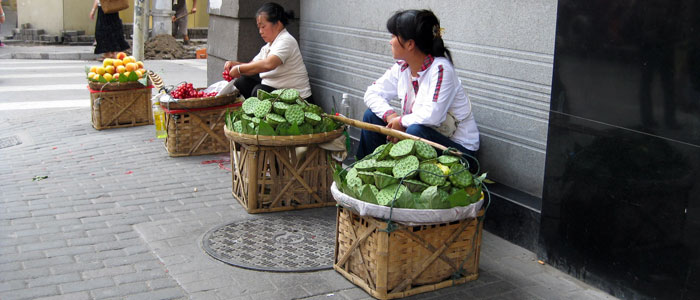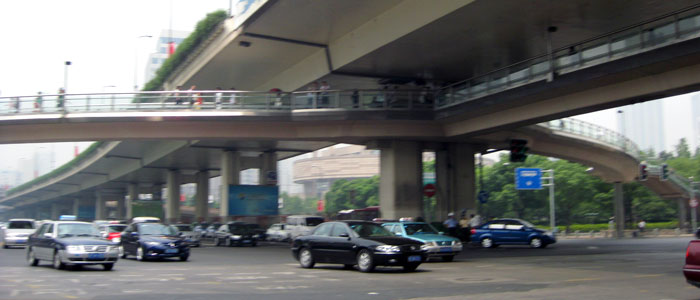Shanghai, China Travel Guide
About Getting Around Attractions Hotels Eats & Nightlife Essentials & Practicals
Accessibility in Shanghai

Accessibility in Shanghai. Huai Hai Lu (road)
Overview: The accessibility information for Shanghai here refers to the main tourist districts of downtown Shanghai, specifically Huangpu District (Nanjing shopping, The Bund) and Luwan District (French Concession and HuaiHai) and the waterfront side of Pudong District. These districts are located just west of the Huangpu River. Tthe main roads in these districts are Nanjing Lu, Jin Ling Lu, Yan’an Lu, Xizang Lu, Huaihai Lu and Fuxing Lu. These streets will be the focus of the accessibility profile of Shanghai.
Shanghai’s pretty funny in that there are spots of the city where buildings and establishments can either be heavily congested, smelly, old and crowded, or Shanghai can have some really spread out spaces and appear like it just received new pavement and a new paint job. The intersection of Central Jin Ling Lu (Huangpu District), which runs east and west, and Xizang Lu, which runs north and south and intersects Jin Ling Lu, is a perfect example of the ultra crowded to the spacious. East of Jing Ling Lu and Xizang, the sidewalks and streets are older and are packed with shops and people. Sometimes an overwhelming odor prevails. But, this is also a lively area. West of the Jin Ling and Xizang intersection, there’s a nice park area and a lot of space on Jin Ling. Down a block to Huai Hai from Jin Ling, the crowd is at it again but the sidewalks are wider and the area is a bit cleaner because it’s more of a retail area.

Vendors on Jinglng Lu, Shanghai
Vendors will set up small stalls on sidewalks and sometimes vehicles are parked on the sidewalk or stick out of a driveway, blocking sidewalks. But, for the most part, the city center of Shanghai is pretty wheelchair accessible any new building – and there are tons – are usually wheelchair friendly.
There are a few challenges to Shanghai’s accessibility though. Probably the most challenging part of Shanghai is transportation. This is bad news. Metros systems have elevators but many stops have steps to reach these elevators! Buses are crowded and I am not aware of any that are handicap accessible. Mainly, a lot of cabs won’t stop to pick you up in rush hour traffic. They will pick you up at night at a restaurant or a bar or in front of your hotel but forget it during peak morning traffic, afternoon and evening traffic if you’re in a busy area.
You can get around this by staying at a hotel, like in Beijing, that has cabs waiting in line for customers. If you’re with friends, pretend you are not with them and when they hail a cab over, then, quickly wheel over and have them put your wheelchair in the trunk and speed off. Tell the cab driver a destination only when the cab is moving.
The second challenge in Shanghai is the lack of budget hotels in the city center; that is, in the touristy, fun areas. With the lack of budget hotels comes a lack of wheelchair accessible, budget hotels.

Bridges and getting around Shanghai
Shanghai has a few raised roads and bridges over intersections. Here, you have to go up a block or so to find a crosswalk underneath the bridge.
Most of the main tourist attractions are wheelchair accessible.